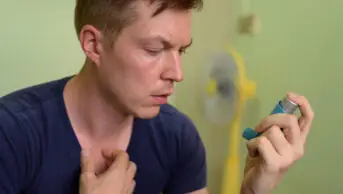The new medicines service (NMS) is an advanced service in the community pharmacy contractual framework. It consists of community pharmacist structured interviews with patients during their first month of treatment with a new medicine. The service aims to improve medicines concordance and improve patient understanding of their treatment.
Anticoagulants are one of the groups of medicines eligible for NMS because poor adherence is known to result in potentially significant patient harm — either through ineffective treatment or side effects.
Community pharmacists usually identify and recruit patients into the service when they first dispense an eligible medicine for a patient. Patient medication records systems highlight potentially eligible patients. However, anticoagulant patients identified in this way are usually ineligible because the first supply by the community pharmacy is not the first supply to the patient: the first month of treatment during which NMS is effective has already been completed using the supply of medicines made by the hospital clinic.
At a multidisciplinary meeting in spring 2015, Sue Rhodes and Sarah Bond from the Great Western Hospital expressed concerns about the reduced follow-up they were able to provide to patients prescribed novel oral anticoagulants (NOACs), while Fiona Castle from the local pharmaceutical committee (LPC) expressed concern about community pharmacists’ inability to identify anticoagulant patients soon enough to provide follow up through the NMS. We agreed to work together to develop a referral scheme.
Community pharmacies in Swindon use PharmOutcomes — a secure web-based system — to record data relating to locally commissioned services (emergency contraception, stop smoking and substance misuse services). The providers of this system (Pinnacle) introduced new functionality in 2015 to facilitate secure patient referral between different providers. This functionality was used to facilitate our anticoagulant referral scheme.
From October 2015, the anticoagulant team commenced asking all new patients for details of their usual community pharmacy and for permission to share information with them. Trained band 3 anticoagulant administrators then register the data on PharmOutcomes. The utilisation of the administrators to complete data entry has ensured a high percentage rate of patient referral to the NMS service.
As soon as the information is saved to PharmOutcomes, the referral is visible within the PharmOutcomes services page of the receiving community pharmacy. An automated email is sent to the pharmacy to inform them that a referral is waiting for their attention. Pharmacy staff may access the referral either because of this email or when they log-on to record information related to another service.
Between 1 October 2015 and 31 January 2017, the anticoagulant clinic made 526 referrals to pharmacies at an average of 33 referrals per month. These include 232 for patients started on rivaroxaban, 205 for apixaban, 74 for warfarin and 15 others. Of these, 383 referrals (72.8%) were acknowledged by the pharmacy and 311 (59.1%) were marked as ‘complete’ on the system.
Pharmacists receiving the referrals have reported actions arising from 271 of the referrals. In the majority of cases the patient was followed up through the NMS. However, informal follow up by telephone, post-discharge medicines use review and informal follow up when the patient visited the pharmacy have also been reported.
There have been some especially notable interventions recorded by pharmacists, where the intervention has resulted in the patient commencing or continuing to take their prescribed anticoagulant or double prescribing has been avoided.
Several pharmacists contacted the anticoagulant clinic directly with concerns about the patients. This system has greatly improved the communication between the community pharmacies and the anticoagulant clinic and has resulted in a better working relationship, which, therefore, aids rapid resolution of potential compliance issues with anticoagulant medicines.
Feedback from pharmacists has been positive. Around 88% of referrals were reported as “useful”, with the exceptions relating to patients who could not be contacted or who did not participate in arranged NMS interviews.
Patience and tenacity are needed to get the scheme started. There are always other competing priorities in both the clinic and community pharmacy. A champion is needed to help the scheme reach critical mass. Locally this was the LPC chief officer, who was instrumental in encouraging everyone to “just try it out” and providing the positive feedback necessary to everyone to keep going. The system is now firmly embedded.
The LPC also prepared a crib sheet that included relevant counselling points that may arise during the NMS consultation. This was valued by community pharmacists (securing their confidence that their clinical knowledge was adequate) and the anticoagulant clinic (securing confidence in the follow up being provided to patients). This document remains in use to support pharmacists new to the area and unfamiliar with the scheme.
Fiona Castle
Chief Officer
Swindon and Wiltshire Local Pharmaceutical Committee
Sarah Bond
Specialist Anticoagulant Pharmacist and Joint Anticoagulant Lead
Sue Rhodes,
VTE Clinical Nurse Specialist and joint Anticoagulant Lead, Great Western Hospitals NHS Foundation Trust, Swindon
Disclosure: The hard copy of the crib sheet for community pharmacists mentioned in this piece was printed using an educational grant from Bayer.


